25+ SAMPLE Construction Hold Harmless Agreement
-
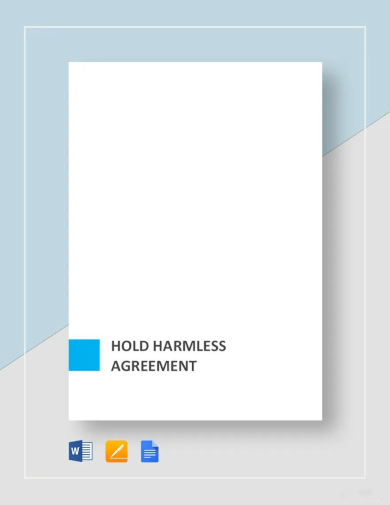
Hold Harmless Agreement Template
download now -
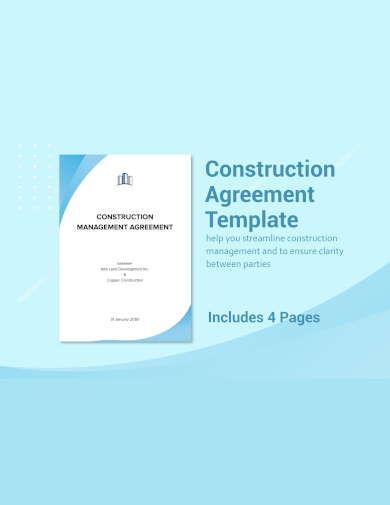
Construction Agreement Template
download now -
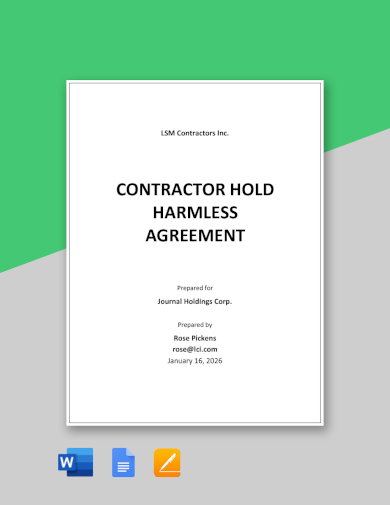
Contractor Hold Harmless Agreement Template
download now -
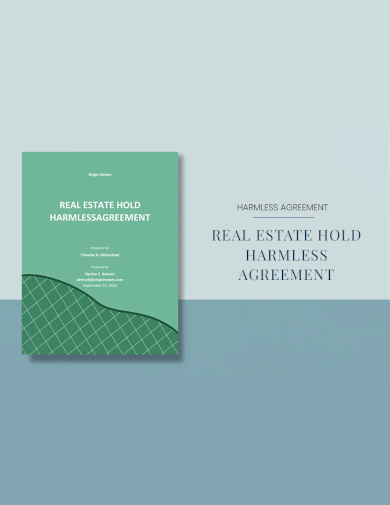
Real Estate Hold Harmless Agreement Template
download now -

Subcontractor Hold Harmless Agreement Template
download now -
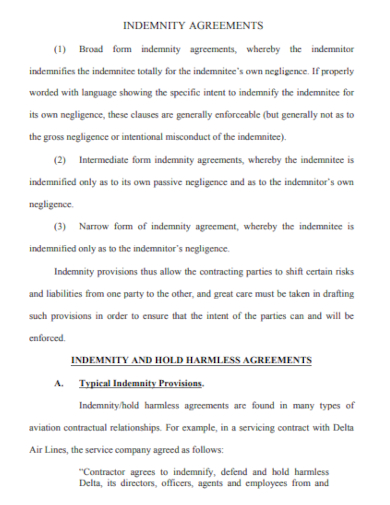
Construction Hold Harmless Indemnity Agreement
download now -
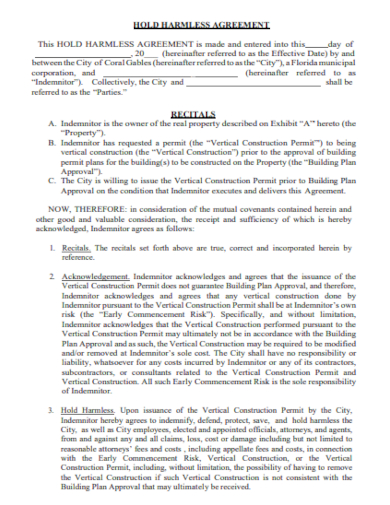
Sample Construction Hold Harmless Agreement
download now -

Printable Construction Hold Harmless Agreement
download now -
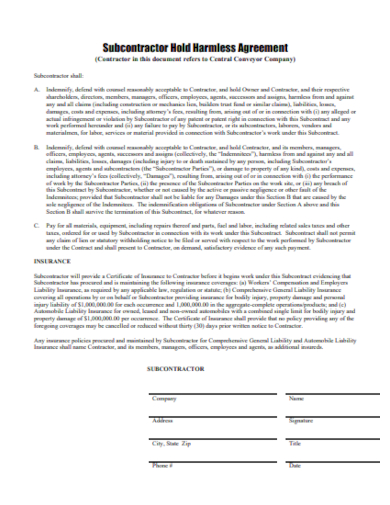
Construction Subcontractor Hold Harmless Agreement
download now -
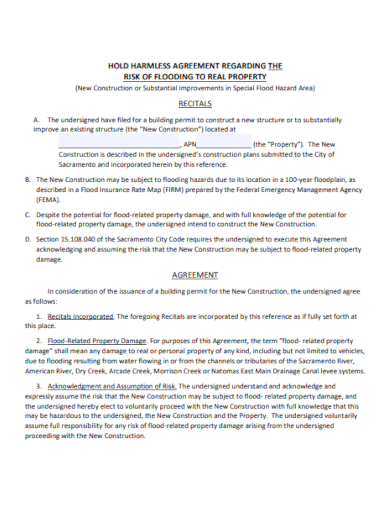
Construction Property Hold Harmless Agreement
download now -
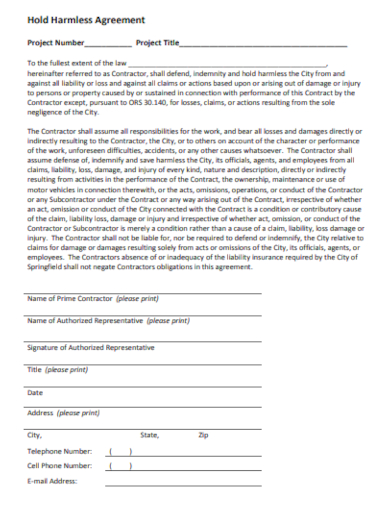
Construction Project Hold Harmless Agreement
download now -
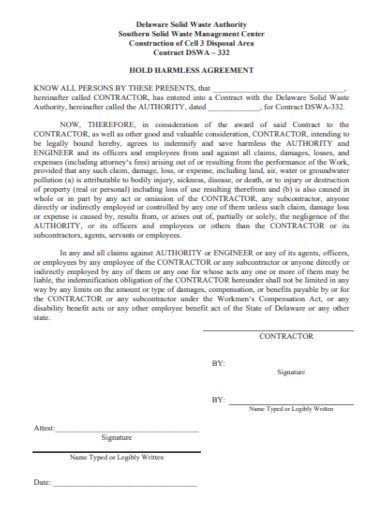
Contractor Construction Hold Harmless Agreement
download now -
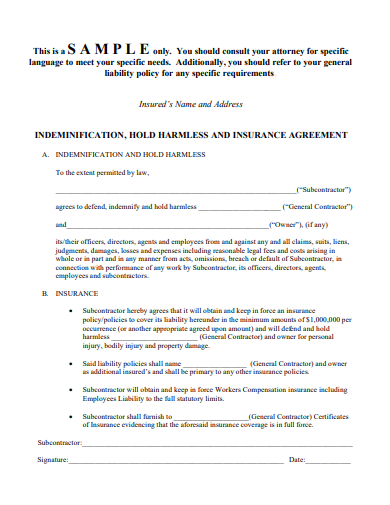
Construction Hold-Harmless Insurance Agreement
download now -
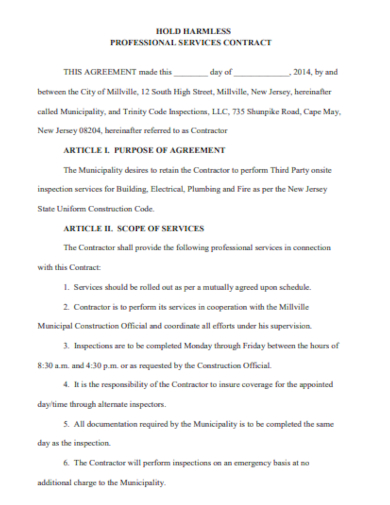
Construction Hold Harmless Services Agreement
download now -
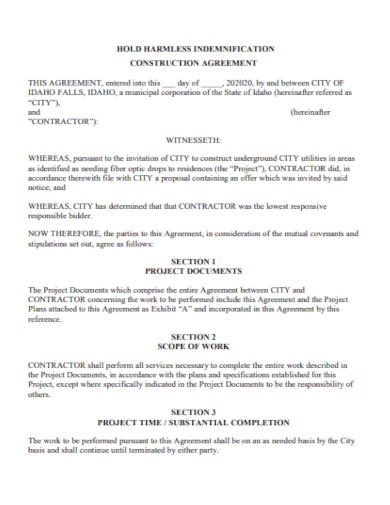
Construction Hold Harmless Indemnifaction Agreement
download now -
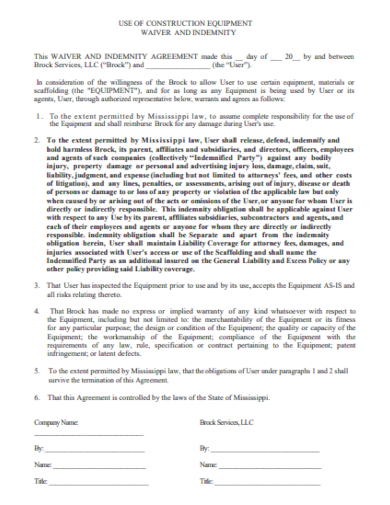
Construction Waiver Hold Harmless Agreement
download now -
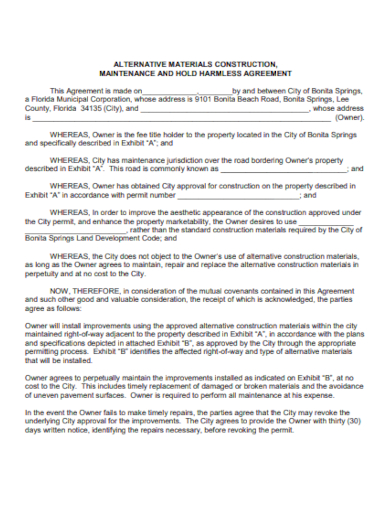
Construction Maintenance Hold Harmless Agreement
download now -
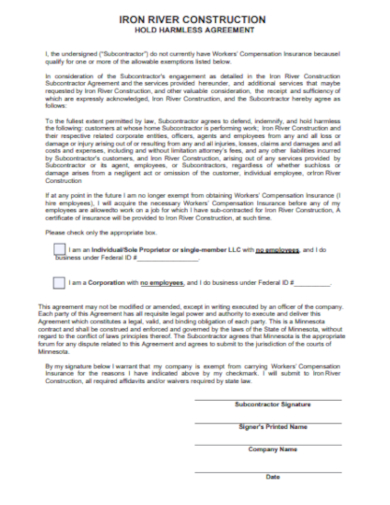
Construction Hold Harmless Agreement in PDF
download now -

Construction Hold Harmless Agreement Form
download now -
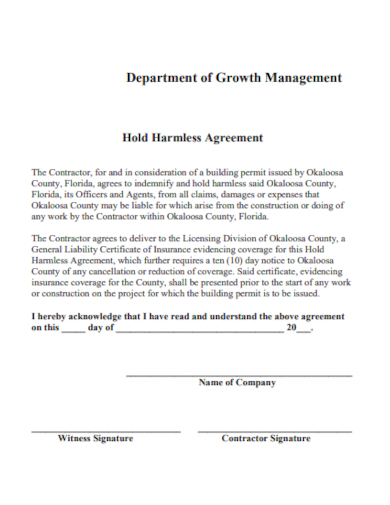
Construction Management Hold Harmless Agreement
download now -

Construction Liability Hold Harmless Agreement
download now -
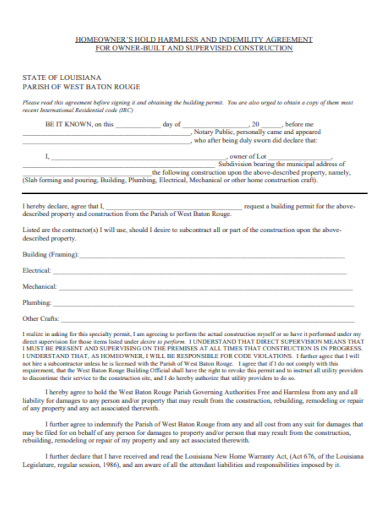
General Construction Hold Harmless Agreement
download now -
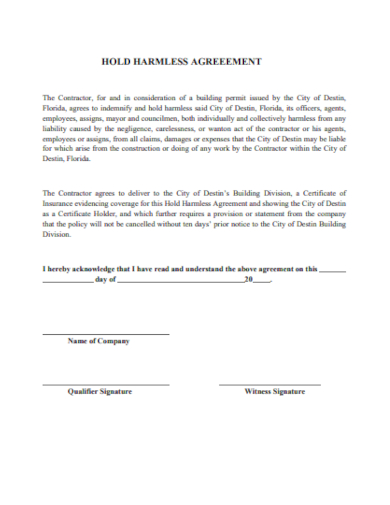
Construction Work Hold Harmless Agreement
download now -
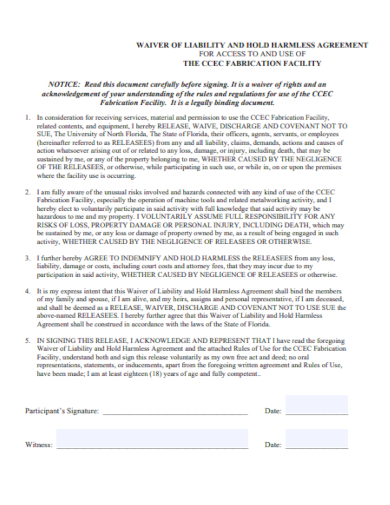
Simple Construction Hold Harmless Agreement
download now -
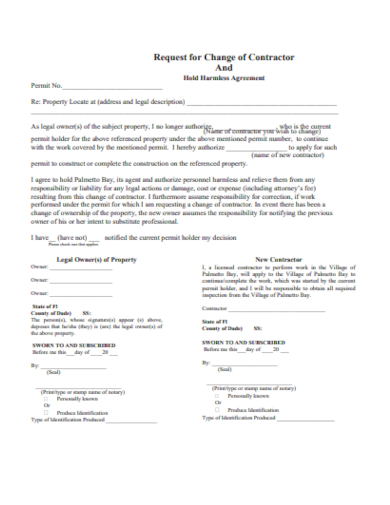
Basic Construction Hold Harmless Agreement
download now
FREE Construction Hold Harmless Agreement s to Download
25+ SAMPLE Construction Hold Harmless Agreement
Definition:
The Strategic Shield: Understanding the Construction Hold Harmless Agreement
Building Blocks of a Hold Harmless Agreement:
Laying the Legal Foundation: Tips for a Solid Agreement
Beyond the Agreement: Best Practices for Risk Management
What should a Construction Hold Harmless Agreement include?
How do Hold Harmless Agreements benefit property owners?
Why is a Hold Harmless Agreement important in construction?
Should independent contractors use Hold Harmless Agreements?
What happens if there is a breach of a Hold Harmless Agreement?
Definition:
A Construction Hold Harmless Agreement is a legal document that transfers the risk of potential legal claims from one party to another, ensuring that one party will not hold the other responsible for accidents, risk, or litigation costs. This agreement is commonly used in construction to protect employers against liabilities arising from the actions of their contractors or subcontractors.
The Strategic Shield: Understanding the Construction Hold Harmless Agreement
In the intricate ballet of construction projects, a Construction Hold Harmless Agreement acts as a strategic plan, safeguarding parties from liabilities and claims. This clause or contract essentially involves one party agreeing not to hold the other liable for injuries, damages, or losses incurred during the execution of a construction project.
Defining the Hold Harmless Clause:
A hold harmless clause in a construction agreement is a statement where one party agrees not to hold the other liable for risk, loss, or damage that may occur during the course of the project. It serves as a protective shield, strategically transferring risk from one party to another, and is a critical component in the realm of construction law.
Different Types of Hold Harmless Agreements:
Hold harmless agreements can take several forms depending on the extent of liability one party is willing to assume. The three main types are:
- Type I – Broad Form: One party assumes all liability, including liability for accidents and negligence.
- Type II – Intermediate Form: One party assumes liability only for accidents and negligence they are partially responsible for.
- Type III – Limited Form: One party assumes liability only for accidents and negligence caused entirely by themselves.
The Scope of Protection:
The scope of a hold harmless agreement defines what specific liabilities are covered and to what extent. It might cover personal injury, property damage, or other liabilities, and the scope directly affects the indemnity provisions.
Interpreting State and Federal Laws:
The enforceability of hold harmless agreements can vary significantly from one jurisdiction to another, with some states having specific statutes that govern the use and interpretation of these clauses. A well-crafted agreement takes into account the legal landscape in which the construction project takes place.
Impact on Insurance Policies:
In the construction industry, a hold harmless agreement often works in tandem with insurance policies. Contractors should understand how these agreements interact with their insurance coverage, often requiring them to carry additional coverage such as general liability agreement to hedge against the risks assumed.
Conflict with Other Contractual Obligations:
Occasionally, the terms of a hold harmless agreement might conflict with other contractual obligations or insurance policies. Identifying and resolving these conflicts is crucial for ensuring that the shield provided by the agreement is not compromised.
Periodic Review and Updates:
Given the changing nature of construction projects and evolving legal interpretations, hold harmless agreements should be reviewed and updated periodically. This ensures ongoing relevancy and enforceability, adapting the strategic shield to new conditions and legal requirements.
The Role of Legal Counsel:
Consulting with legal counsel when drafting or agreeing to a hold harmless clause is indispensable. They can offer insight into the complexities and suggest modifications to serve the best interests of the party, ensuring that the shield is both strategic and sturdy.
Building Blocks of a Hold Harmless Agreement:
To erect a dependable shield through a Hold Harmless Agreement, several key building blocks must be in place:
Identifying the Parties Involved:
A critical aspect of any hold harmless agreement is the clear identification of all parties involved. This section should outline who is the ‘Indemnifier’ – the party promising to hold harmless, and who is the ‘Indemnitee’ – the party being protected.
Scope of Indemnification:
This section details the types of risks and liabilities covered by the agreement. It could include personal injury, property damage, or any other specific risks associated with a construction project. Clarity in this area is essential to avoid future disputes.
Type of Hold Harmless Agreement:
It’s important to specify whether the agreement is a ‘Type I’, offering broad protection, a ‘Type II’, with intermediate coverage, or a ‘Type III’, which is limited to the indemnifier’s scope of work on the construction project.
Duration of the Agreement:
Outlining the duration for which the indemnification is valid is crucial. This typically spans the duration of the construction project and may include a specified period after its completion.
Conditions and Limitations:
Setting the conditions under which the indemnification agreement is enforceable and stating its limitations help to manage expectations and protect the interests of both parties. This might include compliance with laws, adherence to project specifications, or insurance requirements.
Dispute Resolution:
The agreement should have a clear mechanism for resolving disputes, whether through arbitration, mediation, or court proceedings, specifying jurisdiction and choice of law.
Signature and Notarization:
For the hold harmless agreement to be legally binding, it must be signed by both parties and, depending on local laws, notarized to affirm the identity of the signatories and their agreement to the terms.
Laying the Legal Foundation: Tips for a Solid Agreement
For a Construction Hold Harmless Agreement to stand firm, it must rest on a solid legal foundation:
Consult With Legal Experts:
Before drafting a hold harmless agreement, it’s imperative to consult with legal professionals who specialize in construction law. They can provide valuable insights into the legal language and structure that will make the agreement enforceable.
Tailor the Agreement to the Project:
No two construction projects are identical, and the hold harmless agreement should reflect the specific risks and responsibilities involved in the project at hand. Tailor the agreement to address the unique aspects of the project’s scope, location, and involved parties.
Specify Insurance Requirements:
Ensure the agreement delineates the types and amounts of insurance each party must carry. This includes general liability, workers’ compensation, and any additional coverage that may be pertinent to the project.
Clarify the Scope of Indemnity:
Clearly define what incidents or actions are covered under the agreement. Ambiguities can lead to legal challenges, so it’s crucial to be as explicit as possible regarding the indemnity agreement.
Address Subrogation Rights:
The agreement should clarify the subrogation rights of insurers. In other words, after paying a loss, the insurer can step into the shoes of the party to whom they paid the claim, to seek reimbursement from the responsible party.
Update with Current Laws:
Laws change, and it’s important to ensure that your hold harmless agreement adheres to the current legal standards and practices. This includes being compliant with both state and federal regulations.
Clear Communication and Understanding:
All parties should fully understand the implications of the hold harmless agreement. Clear communication about each clause can prevent future legal complications and ensure that each party is aware of their responsibilities.
Record Keeping:
Maintain detailed records of all communications and versions of the agreement. In the event of a dispute, having an accurate history of the agreement’s development can be indispensable in legal proceedings.
Beyond the Agreement: Best Practices for Risk Management
While a Hold Harmless Agreement is a strong start, combine it with these practices for comprehensive risk management:
Regular Risk Assessments:
Conducting ongoing risk assessments throughout the construction project can identify potential issues early. By continuously monitoring, you can adjust the hold harmless agreement as necessary to address new risks.
Safety Protocols and Training:
Implementing comprehensive safety protocols and providing regular training to all employees can minimize the chances of accidents occurring on-site, thereby reducing the potential for claims under the hold harmless agreement.
Documentation and Record-Keeping:
Keep detailed records of all activities, incidents, and safety measures. This documentation can prove invaluable if a claim is filed, showing due diligence and compliance with safety standards.
Clear Scope of Work:
Define a clear scope of work within the hold harmless agreement to ensure all parties understand their roles and responsibilities. This reduces the risk of work-related disputes and claims.
Insurance Verification:
Regularly verify the insurance status of all contractors and subcontractors involved in the project. Ensure that their coverage meets the requirements stipulated in the hold harmless agreement.
Dispute Resolution Mechanisms:
Include a dispute resolution process in the agreement to manage and resolve conflicts efficiently. This may involve mediation or arbitration clauses that can provide a less costly and more expedient resolution than litigation.
Subcontractor Compliance:
Ensure that subcontractor agreements are also bound by the hold harmless agreement terms, which may require them to provide similar indemnification to the primary contractor.
Legal Compliance:
Stay abreast of changes in legislation and legal precedents that may affect the validity and enforcement of hold harmless agreements. Regularly review and update the agreement to comply with new legal requirements.
Financial Reserves:
Maintain a reserve fund or line of credit to cover potential liabilities that may arise. This financial buffer can help manage any unforeseen costs associated with indemnification claims.
Continuous Communication:
Maintain open lines of communication with all stakeholders about risk management practices and the implications of the hold harmless agreement. When all parties are informed, they can work together to manage risks proactively.
What should a Construction Hold Harmless Agreement include?
A Construction Hold Harmless Agreement should include specific definitions of liabilities, the scope of indemnification, relevant legal jurisdictions, involved parties’ details, and conditions under which it is enforceable, along with any exceptions, duration of the agreement, and signatures of the consenting parties.
How do Hold Harmless Agreements benefit property owners?
Hold Harmless Agreements benefit property owners by transferring certain risks and liabilities to contractors or other parties, protecting owners from lawsuits or claims related to accidents, injuries, or damages that occur on the property during construction.
Why is a Hold Harmless Agreement important in construction?
A Hold Harmless Agreement is important in construction as it legally ensures that the risks of work-related accidents or property damage are assumed by contractors, not property owners, providing a clear framework for liability and protection against potential litigation.
Should independent contractors use Hold Harmless Agreements?
Independent contractors should use Hold Harmless Agreements to limit their liability, protect against claims, and delineate responsibility for accidents or damage that may occur during the course of a project, ensuring all parties are clear on risk allocation.
What happens if there is a breach of a Hold Harmless Agreement?
If there is a breach of contract for a Hold Harmless Agreement, the party that failed to uphold the terms may face legal action, including claims for damages. The exact consequences depend on the agreement’s specifics and the jurisdiction’s laws.
In conclusion, the construction hold harmless agreement is an indispensable tool for mitigating risk and fortifying project integrity. By clearly defining liability and safeguarding involved entities against claims, this contract agreement underpins a secure construction process. Incorporating such a pact is not just prudent—it’s essential for fostering trust, ensuring legal protection, and maintaining a steadfast focus on project completion within the intricate tapestry of construction operations.
